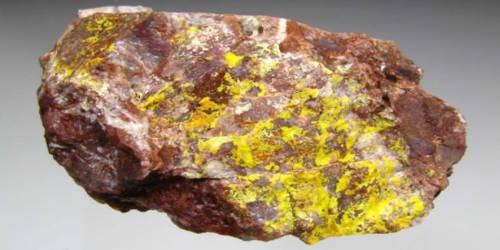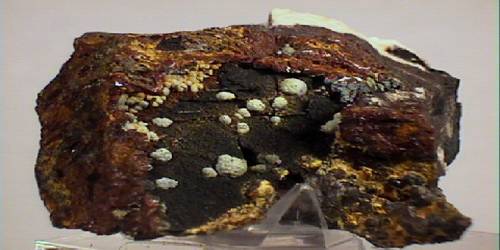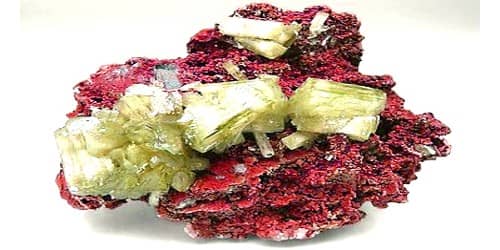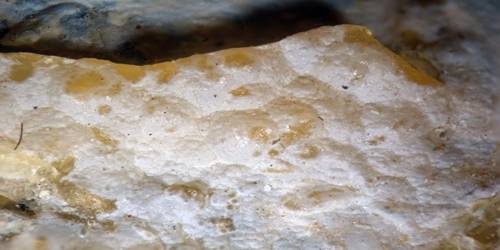Bergenite is a rare uranyl phosphate of the more specific phosphuranylite group. It was named for the type locality near Bergen at the Streuberg quarry in Vogtland, Saxony, Germany. The phosphuranylite-type sheet in bergenite is a new isomer of the group, with the uranyl phosphate tetrahedra varying in an up-up-down, same-same-opposite orientation. It is a rare mineral that occurs at the type locality on a mine dump in association with uranocircite, torbernite, autunite, dewindtite, and barian uranophane.
All bergenite samples have been found in old mine dump sites. Uranyl minerals are a large constituent of uranium deposits.
General Information
- Category: Uranyl phosphate mineral
- Formula: Ca2Ba4[(UO2)3O2(PO4)2]316(H2O) or (Ba, Ca)2(UO2)3(PO4)2(OH)4·5.5(H2O)
- Crystal system: Monoclinic
- Crystal class: Prismatic (2/m) (same H-M symbol).

Properties
The phosphuranylites are one of the two major groups of the uranyl series and are the most extensive of the uranium minerals. Uranyl phosphates include 45 different minerals, at least 16 of which belong to the phosphuranylite type topology, including dumontite, vanmeersscheite, upalite, and the most characteristic, phosphuranylite. As explained by Frost et al., the uranyl phosphates display diverse chemical and structural features, which often exhibit the geochemical conditions present during formation.
- Color: Yellow to greenish yellow
- Crystal habit: Acicular, tabular
- Mohs scale hardness: 2–3
- Streak: yellow white
- Diaphaneity: semitransparent
- Density: 4.1
Physical properties
Bergenite forms as a dark yellow crust with well-developed, small thin needle-like crystals. An original description of bergenite is the orthorhombic symmetry and a density greater than 4.1 g/cm3.
Geologic occurrence and location
Phosphuranylites usually precipitate from the solution containing uranium, phosphorus, potassium, and calcium. Most phosphuranylite, and all bergenite specimens are generated from the waste of various mines. This is a low-temperature and often low-pressure process. Bergenite occurs in fractures of quartz, muscovite, and plagioclase, especially along cleavage planes.
Bergenite was first discovered at a now deserted mine dump of the SDAG Wismut shaft 254 in Mechelgrun, Vogtland Mining District, Saxony, Germany near the city of Bergen, Lower Saxony. Other samples have also been found in uranium deposits in the Black Forest, Germany, and in graphitic uranium ore in South Korea.
Infoormation Source:
















